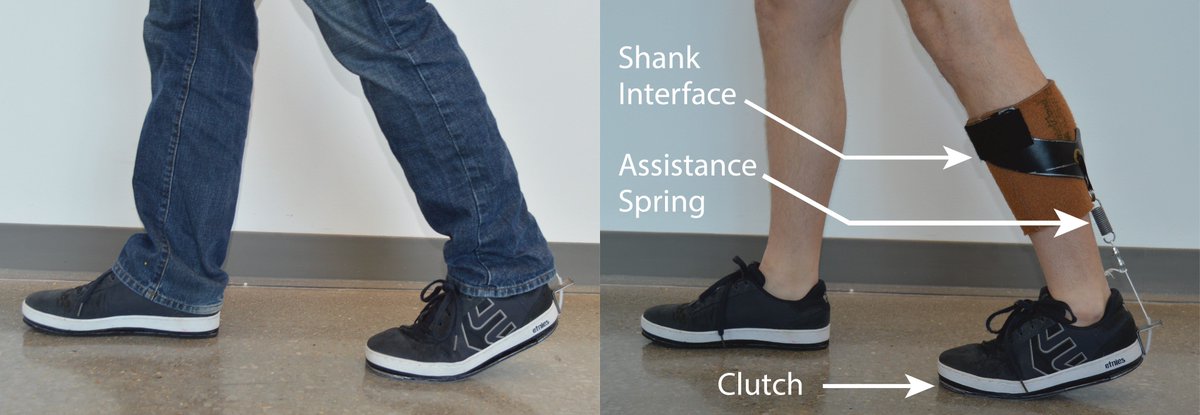The latest chapter in our quest to create assistive #exoskeletons #exosuits #mechanizedclothing that can integrate seamlessly into daily life & be concealed under everyday clothing. 1/n #ExoskeletonsForEveryone
@MatthewYandell @Joshuatacca @ExoskeletonRep
ieeexplore.ieee.org/document/86673…
@MatthewYandell @Joshuatacca @ExoskeletonRep
ieeexplore.ieee.org/document/86673…

We were inspired by the assistive ankle exoskeleton made by @gregory_sawicki & @StevenHCollins. We loved that it was lightweight & unpowered. But we really wanted a version that could be inconspicuous, both audibly & visually (fit under pants without protruding elements). 2/n
To accomplish this we invented a new under-the-foot friction clutch mechanism that is low-profile (5 mm tall), quiet & unmotorized. It uses the person's own body weight for the clutching function, enabling it to operate across various gait speeds, for walking & also running. 3/n 

We then used a spring acting in parallel with the calf muscles to couple this under-the-foot clutch to a soft conformal shank interface, which is functionally similar to calf wraps used by @walshharvard & others in powered robotic exosuits. 4/n 

We tried to blend all the design aspects we love about previous #exoskeletons & #exosuits with all the things we love about everyday clothing/footwear. Basically we're a bunch of adults still dreaming about transforming ourselves into superheroes & we want our own supersuits! 5/n
We created a prototype that is low profile, lightweight, quiet, low cost to manufacture, intrinsically adapts to different gait speeds & doesnt restrict non-sagittal ankle motion; while still providing assistive ankle torque that can reduce demands on biological calf muscles. 6/n
In this paper we present out new device design, along with results from bench top tests using a @humotech actuation system to characterize holding force of the friction clutch, and two #biomechanics gait analysis case studies to confirm the prototype works! 7/n
Our design highlights the potential for performance-enhancing #exoskeletons that are inconspicuous, unobtrusive & can benefit a broad range of people; for instance by reducing fatigue in industrial or recreational users, or assisting people with impaired calf muscle strength. 8/n
Excited to share this & other updates on our research & development of spring-powered exosuits (aka mechanized clothing) at #WearRAcon19 next week! 9/9
@wearablerobots #Biomechanics #EverydaySuperheroes #WheresMySupersuit
@wearablerobots #Biomechanics #EverydaySuperheroes #WheresMySupersuit
• • •
Missing some Tweet in this thread? You can try to
force a refresh






